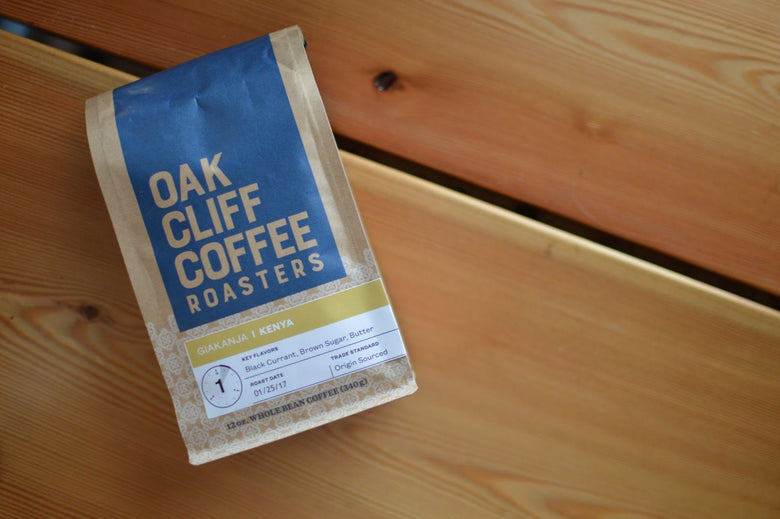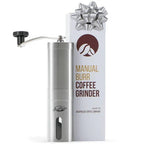If you’ve ever looked at a row of coffee bags and were confused at how to choose one, you’re not alone. Reading coffee packaging can be difficult. There are strange names that seem impossible to pronounce, the language is always different, and it’s hard to decipher which coffees are great and which are disappointing.
Without much packaging standardization, there’s nothing to keep a few bad apples from trying to deceive you when you’re looking at your coffee options. Sadly, misinformation and clever trickery are a modern problem with coffee packaging.
I’m going to show you how to see through it.
As you educate yourself on coffee packaging, you’ll be able to see through the tricks of the roasters. You’ll know how to determine if a coffee is high quality or not. You’ll know how to decide on coffees based on your preferences.
You want to buy coffee that is ethically sourced, well grown and roasted, and super delicious. Who doesn’t? Let me teach you to read coffee packaging so you can accomplish that.
Coffee Freshness & The Lie
Fresh coffee is the best coffee. Always.
Many roasters want to keep you in the dark about the wonders of fresh coffee. They want you to believe your coffee is static, that it’s not going to change over time. This helps them sell coffee off the shelves of careless grocery stores without having to worry about throwing any out because it gets stale.
But coffee does get stale. Just like bread, like cheese, like apples. Coffee is an organic product and organic foods decay over time. Don’t buy the lie.
Roasted coffee has two to three weeks of peak freshness before the flavors start falling apart and the aromatic oils evaporate away. Bags of ground coffee are even worse, having only 30 minutes or so once you open the bag before rapid decay begins.
When it’s fresh, coffee is ripe with vivid flavors, features a crisp and refreshing acidity, and a can be very sweet and well rounded. This is what we’re after - not stale, dull, boring coffee!
If you see a “use by” or “best by” date on a bag of coffee that is months away, the coffee roaster either doesn’t know the wonder of fresh coffee or they’re trying to act like there’s no difference between fresh and stale. Either way, you don’t want to waste your money on old coffee.
Read: The Easy Guide to Coffee Bean Storage
Look for a “roasted on” date. This shows that the roaster values selling fresh coffee and is willing to let a few bags go if it means providing you with a fresh coffee experience. Buying coffee beans that are roasted-to-order is the best way to ensure that your coffee is super fresh.
Understanding Coffee Flavor & Flavoring
Do you like coffee that is more chocolatey and nutty, or sweet and floral? Do you like a bright and crisp acidity or a mellow, calm one? If you don’t know how to answer these questions, it’s time you buy coffee from a new roaster.
Coffee packaging should empower you to taste and understand the flavors you experience, and trust me - there’s a lot to experience. Hints of fruits, spices, flowers, and other realms of flavor can be found in the subtleties of coffee.
There are a million coffee bags out there that describe their coffee the same way. This happens either because their coffees are stale and flavorless (and they don’t want you to know it), or because they’re not interested in helping you have a great time with your coffee.
Read: How To: Learn To Taste Coffee!
On the other hand, packaging that gets pretty specific with the flavors is meant to spur you towards greater appreciation. Don’t be shy when you see specific flavor notes - that’s a good sign!
Some coffee roasters source really bad coffee that tastes terrible. Sad! To cover the pitiful flavor, they spray flavor oils over the beans, which you taste when you brew the coffee. These oils can be made naturally, but they are not the oils that occur naturally in the coffee beans. They don’t taste like they belong. They taste like flavor oils covering up bad coffee (exactly what they are).
If you want to have great coffee that gets your day started on the right foot, I suggest you avoid flavored coffees and look for flavorful coffees. The difference is night and day!
Origin And Story
Coffee has a dark history of slavery and exploitation. In modern times, there are rarely violent forces keeping farmers poor and working against their will, but poverty among farming communities is still rampant today.
Some companies source coffee in ethically questionable ways that do nothing to help the farmers earn a fair and living wage. These companies are not going to be willing to share much information about where the coffee comes from, fearing their sourcing practices and carelessness could become exposed
Coffee roasters who proudly announce their partnerships with coffee farms, on the other hand, open themselves up to questions, research, and competition. These roasters are more likely to be the ones that are making positive impacts in struggling communities and regions and would love for you to participate in the effort.
Read: What Makes Specialty Coffee Special?
Roasters who are proud of their coffee’s origin and story are transparent, accountable, and are far less likely to deceive you into buying a low-end coffee that they bought for nothing.
A Real World Example
Oak Cliff Coffee Roasters is a reputable specialty coffee roaster in Dallas, Texas. You can see that their coffee packaging is full of helpful information for learning about the coffee.


OCCR is proud to announce the roast date, the flavor notes, the origin region (the farmer is on the website), the sourcing method, the genetic variety, the farm altitude, the genetic variety of the plant, and more.
This is coffee packaging that aims to empower you and is a great example of a roaster elevating the experience of his customers. This is what you’re after!
The More You Know, The Better
Coffee packaging that teaches you about coffee freshness, coffee’s flavor, and the story of a farmer is packaging that wants to empower you and pull you into the grand world of coffee. These are the big things to look for, but there are some other bits of data that could further help you.
Over time, you may realize that there are big flavor differences due to the processing method of the green coffee beans, the altitude of the farm, and the genetic variety of the plant. The more you know, the more you can explore the grand world of coffee.


